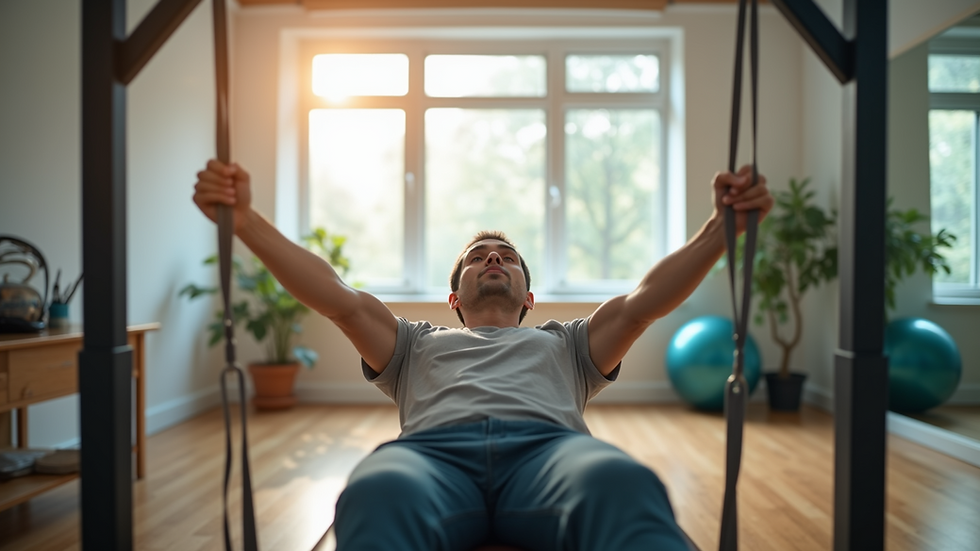Understanding the Role of Orthopaedic Sports Medicine
- Justin Smith
- Aug 6
- 4 min read
In the realm of physical activity, injuries and musculoskeletal issues are common challenges that can hinder performance and quality of life. The specialized field of orthopaedic sports care addresses these challenges by focusing on the prevention, diagnosis, treatment, and rehabilitation of sports-related injuries. This discipline combines advanced medical knowledge with practical approaches to help individuals maintain or regain their active lifestyles. The following discussion explores the essential aspects of orthopaedic sports care, emphasizing its significance for athletes, weekend warriors, and active elderly individuals.
The Importance of Orthopaedic Sports Care
Orthopaedic sports care plays a critical role in managing injuries that affect bones, joints, muscles, ligaments, and tendons. These injuries often result from repetitive stress, acute trauma, or degenerative conditions associated with physical activity. The primary goal of this care is to restore function and reduce pain while minimizing downtime from sports or daily activities.
Effective orthopaedic sports care involves a multidisciplinary approach. It integrates diagnostic imaging, physical therapy, pharmacological management, and surgical interventions when necessary. For example, a torn anterior cruciate ligament (ACL) in the knee—a common injury among athletes—requires precise evaluation and often surgical reconstruction followed by a structured rehabilitation program. This comprehensive care ensures optimal recovery and reduces the risk of re-injury.

Close-up view of knee joint model showing ligaments
Key Components of Orthopaedic Sports Care
Orthopaedic sports care encompasses several critical components that contribute to successful outcomes. These include:
Injury Prevention
Prevention strategies are fundamental to orthopaedic sports care. These include education on proper techniques, conditioning programs to strengthen muscles, and the use of protective equipment. For instance, athletes are often advised to engage in neuromuscular training to improve balance and coordination, which can reduce the incidence of ankle sprains.
Accurate Diagnosis
Precise diagnosis is essential for effective treatment. This process often involves physical examinations, patient history, and advanced imaging techniques such as MRI or ultrasound. These tools help identify the extent and nature of injuries, guiding appropriate interventions.
Non-Operative Treatment
Many sports injuries respond well to conservative management. This may include rest, ice, compression, elevation (RICE), anti-inflammatory medications, and physical therapy. For example, tendinitis often improves with targeted exercises and activity modification.
Surgical Intervention
When non-operative measures are insufficient, surgical options are considered. Procedures may range from arthroscopic repairs to complex reconstructions. Surgical techniques have evolved to become minimally invasive, reducing recovery time and improving outcomes.
Rehabilitation and Return to Activity
Rehabilitation is a structured process designed to restore strength, flexibility, and function. It is tailored to the individual’s injury and activity goals. A gradual return to sport or physical activity is carefully monitored to prevent setbacks.

Eye-level view of physical therapy session with exercise equipment
What does a sports orthopedic do?
A sports orthopedic specialist is a physician trained in the diagnosis and treatment of musculoskeletal injuries related to sports and physical activity. Their expertise extends beyond general orthopaedics to include the unique demands placed on the body during athletic performance.
The responsibilities of a sports orthopedic include:
Evaluating Injuries: Conducting thorough assessments to determine the cause and severity of injuries.
Developing Treatment Plans: Creating individualized care plans that may involve non-surgical or surgical options.
Performing Surgeries: Executing procedures such as ligament reconstructions, meniscus repairs, and fracture fixations.
Coordinating Rehabilitation: Collaborating with physical therapists and trainers to ensure effective recovery.
Providing Preventive Advice: Educating patients on injury prevention and performance optimization.
For example, a sports orthopedic may treat a rotator cuff tear in a baseball pitcher by recommending arthroscopic surgery followed by a tailored rehabilitation program to restore throwing mechanics.

High angle view of surgical instruments arranged for orthopedic surgery
Advances in Orthopaedic Sports Care
Recent advancements have significantly enhanced the effectiveness of orthopaedic sports care. Innovations include:
Biologic Therapies: Treatments such as platelet-rich plasma (PRP) and stem cell injections promote tissue healing and reduce inflammation.
Minimally Invasive Surgery: Arthroscopy allows for smaller incisions, less pain, and faster recovery.
3D Imaging and Navigation: These technologies improve surgical precision and outcomes.
Wearable Technology: Devices that monitor biomechanics and load help in injury prevention and rehabilitation.
These developments enable specialists to offer personalized care that aligns with the latest research and clinical evidence.
Optimizing Recovery and Performance
Successful orthopaedic sports care extends beyond injury treatment to encompass strategies that optimize recovery and enhance future performance. Key recommendations include:
Adherence to Rehabilitation Protocols: Following prescribed exercises and therapy sessions diligently.
Gradual Progression: Increasing activity intensity and duration cautiously to avoid overuse injuries.
Nutrition and Hydration: Supporting tissue repair and overall health through balanced diet and adequate fluid intake.
Regular Monitoring: Scheduling follow-up visits to assess progress and adjust treatment plans as needed.
By integrating these practices, individuals can achieve sustainable improvements in mobility, strength, and endurance.
In summary, the field of orthopaedic sports care is indispensable for those engaged in physical activities. It offers a comprehensive framework for managing injuries and promoting long-term musculoskeletal health. Through expert evaluation, innovative treatments, and dedicated rehabilitation, individuals can return to their desired sports and active lifestyles with confidence.









Comments